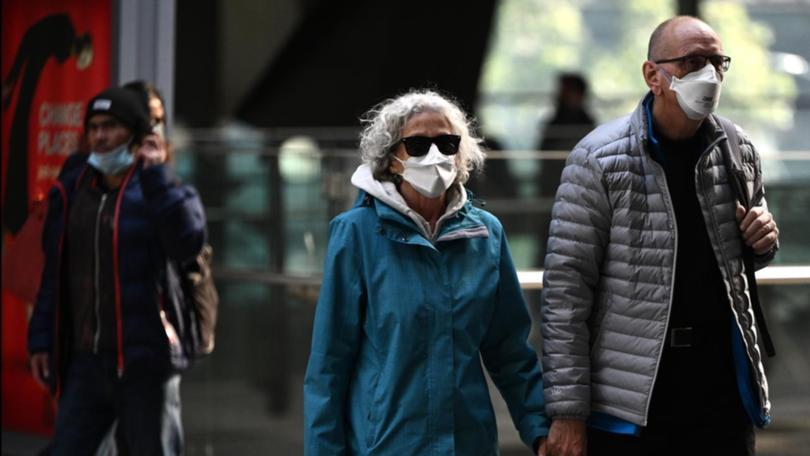NSW and Victoria record spikes in COVID cases and hospitalisations as variant JN.1 drives new wave

NSW and Victoria are recording a spike in COVID-19 cases and hospitalisations as emerging variant JN.1 drives a wave of infections.
Health officials say while the strain is not necessarily more infectious than those before it, Christmas and New Year celebrations have helped it to rapidly become prevalent in the country.
Other states have recorded more gradual waves as a result of JN.1, with Western Australia reporting fewer cases in the lead up to Christmas and Queensland seeing a prolonged and sustained surge in cases since October.
Sign up to The Nightly's newsletters.
Get the first look at the digital newspaper, curated daily stories and breaking headlines delivered to your inbox.
By continuing you agree to our Terms and Privacy Policy.NSW Health’s Jeremy McAnulty explained that like other variants, JN.1 is more resistant to previous immunity or vaccination.
“We know there’s lots of people getting COVID at the moment,” Dr McAnulty told reporters on Tuesday.
“We haven’t seen that high level for about a year.”
However, the proportion of people that are infected who become seriously ill remains roughly the same.
Testing by NSW Health showed the proportion of JN.1 cases rising sharply from late November and increasing into December.
It now makes up more than a third of the state’s cases.
The number of people presenting to emergency departments with COVID-19 each week in NSW has increased to around 1400 people, with roughly 400 being admitted to hospital.
Victorian health officials issued an alert over increased cases of JN.1, saying it had quickly become the most prevalent subvariant in wastewater samples.
The number of people hospitalised with the virus in Victoria has increased to 377 over a seven-day period.
Queensland Chief Health Officer John Gerrard said rather than a single peak in infections, the coexistence of two subvariants appears to have caused overlapping waves for the state.
COVID-19 hospitalisations in Queensland started climbing in mid-October, initially driven by the XBB.1.5 subvariant, with JN.1 emerging in early-December and since becoming dominant.
“While previous COVID-19 waves have peaked at about six weeks, the current wave remains strong after 12 weeks,” Dr Gerrard said.
WA Health said the state’s current wave peaked in mid-to-late December and is now gradually decreasing.
The JN.1 variant is most likely behind the wave and is currently the most common subvariant detected in wastewater, a spokesperson said.
Federal Health Minister Mark Butler described the summer increase as part of a “regular cycle” of waves caused by new Omicron sub-variants.
“For a couple of years now, the Omicron variant of COVID has been the dominant variant across the globe,” he said on Tuesday.
“But we’ve seen sub-variant after sub-variant emerge and cause further waves every four or six months.
“This doesn’t appear to be any different really to the waves that we saw over the course of 2023.”
Mr Butler said the timing of the new JN.1 variant emerging and ramping up into the festive season likely contributed to its rapid prevalence.
“It’s not surprising really, given the degree to which people come together over the Christmas and New Year period,” he said.
“Hospitalisations are up, there was also a reasonable increase in infections in aged care facilities that we’re monitoring closely, as well.”
The impact on the hospital system and number of fatalities remains significantly lower than the same time last year, Mr Butler noted.
Health authorities urged the public to get up to date with their booster vaccinations.
Only around four million booster vaccinations were administered in 2023, with rates much higher among older Australians.
